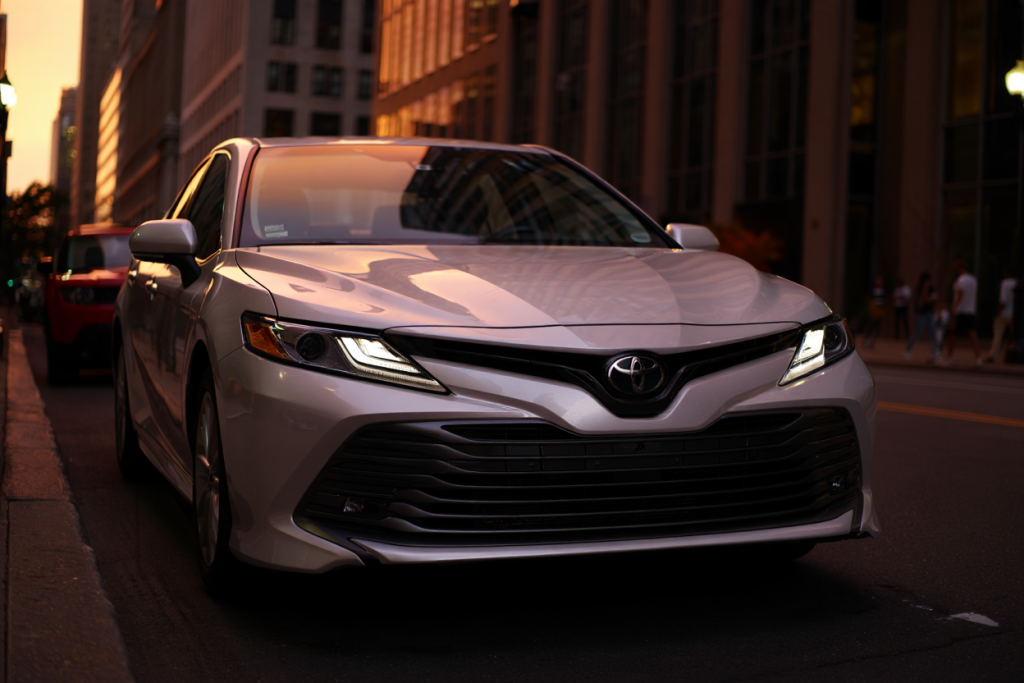Uneven brake pad wear is a common issue that many Toyota Corolla owners overlook until it starts affecting performance. Uneven wear occurs when one brake pad wears faster than the others, which can reduce braking efficiency, cause vibrations, increase stopping distances, and even damage rotors.
Understanding the causes, symptoms, and solutions for uneven brake pad wear is crucial for safe driving and prolonging the lifespan of your braking system. In this guide, we’ll cover how to identify uneven wear, the underlying causes, step-by-step solutions, cost considerations, maintenance tips, and frequently asked questions.
Why Brake Pad Wear Matters?
Uneven brake pad wear compromises stopping power, increases repair costs, and can affect Corolla safety.
The Role of Brake Pads in Safety
Brake pads generate friction against the rotors to slow or stop your Corolla. If one pad wears faster, braking force becomes unbalanced, potentially causing your car to pull to one side or vibrate during braking.
Long-Term Effects of Uneven Wear
Ignoring uneven wear can lead to rotor damage, increased vibration, and costly brake repairs. Replacing only one worn pad is often insufficient; addressing the root cause is key.
Signs of Uneven Brake Pad Wear
Look for vibrations, noise, uneven rotor surfaces, and pulling during braking to catch uneven pad wear early.
Squealing, Grinding, or Chirping
Pads that wear unevenly often cause squealing or grinding noises. One side may sound louder than the other.
Vibrations or Pulling While Braking
If your Corolla pulls to one side or the brake pedal pulses, uneven pad wear may be the cause.
Visible Wear Differences
Inspect your pads by removing the wheels: if one pad is significantly thinner than the opposite pad, wear is uneven.
Increased Stopping Distance
Uneven pads reduce friction on one side, making your Corolla take longer to stop and reducing overall braking efficiency.
Common Causes of Uneven Brake Pad Wear
Uneven pad wear often results from mechanical issues, driving habits, or poor maintenance practices.
Sticking or Seized Calipers
Calipers push pads against rotors. If they stick, one pad remains in constant contact, wearing faster.
Faulty or Worn Hardware
Worn sliders, pins, or clips can prevent pads from moving freely, causing uneven friction and accelerated wear.
Improper Installation
Incorrectly installed pads, reversed orientation, or mixing pad types on the same axle can cause uneven wear.
Rotor Issues
Warped or unevenly machined rotors create inconsistent contact with pads, leading to irregular wear patterns.
Driving Habits
Frequent hard braking, riding the brakes, or driving on hilly terrain increases stress on one side, especially if combined with worn components.
How to Inspect Brake Pads for Uneven Wear?
Visual inspection and measurement help determine which pads need replacement and whether mechanical issues exist.
Tools Needed
- Jack and jack stands
- Lug wrench
- Caliper tool or screwdriver
- Ruler or brake pad gauge
Step-by-Step Inspection
- Safely lift your Corolla and remove the wheel.
- Check pad thickness on both sides. Uneven differences greater than 2–3 mm indicate a problem.
- Inspect the caliper and slider pins for sticking or corrosion.
- Examine the rotor for grooves, warping, or uneven wear.
How to Fix Uneven Brake Pad Wear?

Fixing uneven wear involves replacing pads, addressing mechanical issues, and ensuring proper installation.
Step 1: Replace Worn Pads
- Replace both pads on the affected axle to maintain balanced braking.
- Consider upgrading to ceramic pads for longer life and cleaner operation.
Step 2: Check and Service Calipers
- Clean, lubricate, or replace sticking calipers.
- Ensure slider pins move freely to allow pads to retract evenly.
Step 3: Inspect and Resurface or Replace Rotors
- Minor warping can be corrected by resurfacing.
- Severely damaged rotors should be replaced to prevent new pads from wearing unevenly.
Step 4: Verify Hardware and Proper Installation
- Replace worn clips, pins, and shims.
- Make sure pads are installed in the correct orientation and material matches front/rear requirements.
Step 5: Bed New Pads Properly
- Follow a bedding procedure: gradually apply brakes from low to moderate speed to allow pads and rotors to mate evenly.
Cost Considerations
Fixing uneven brake pad wear can range from $150–$600 depending on parts, rotors, and labor.
- Brake pads replacement: $40–$120 per axle
- Rotor resurfacing: $30–$70 per rotor
- Rotor replacement: $150–$250 per rotor
- Labor: $100–$250 per axle
- OEM vs. Aftermarket: OEM pads cost more upfront but ensure proper fit; aftermarket pads vary in quality and longevity.
Practical Tips to Prevent Uneven Brake Pad Wear
Summary: Regular inspections, smooth driving, and timely maintenance extend pad life and prevent uneven wear.
- Inspect brake pads every 10,000 miles or at each oil change
- Keep calipers, sliders, and pins clean and lubricated
- Avoid riding the brakes or hard stops whenever possible
- Replace pads and rotors in pairs to maintain balance
- Use quality brake fluid and follow manufacturer’s service schedule
Conclusion
Uneven brake pad wear is a common but preventable issue in Toyota Corollas. The key is early detection, proper inspection, and addressing mechanical issues like calipers, rotors, and hardware. Always replace pads in pairs and follow proper installation procedures.
Regular maintenance, smooth braking habits, and using quality OEM or trusted aftermarket pads will extend pad life and keep your Corolla braking safely and efficiently.
For high-quality OEM and aftermarket brake pads and rotors for your Corolla, check our website to ensure proper fit, performance, and safety.
FAQs
- What causes uneven brake pad wear in a Corolla?
Common causes include sticking calipers, worn hardware, warped rotors, improper installation, or aggressive driving habits. - Can I just replace the worn pad instead of both?
No, always replace pads in pairs on the same axle to ensure balanced braking and safety. - How do I know if my caliper is sticking?
Signs include one pad wearing faster than the other, a pulling sensation while braking, or constant pad contact with the rotor. - How often should I inspect my brake pads?
Every 10,000 miles or during routine maintenance like oil changes is recommended. - Will aftermarket pads cause uneven wear?
High-quality aftermarket pads should not cause uneven wear, but low-quality or mismatched pads can accelerate it. - Can warped rotors cause uneven brake pad wear?
Yes. Warped or grooved rotors create inconsistent pad contact, leading to uneven wear. - How much does it cost to fix uneven brake pad wear?
Costs range from $150–$600 depending on pads, rotors, labor, and whether calipers or hardware need replacement.

Benjamin Grey is an automotive engineer and writer at Car Parts Advisor. With years of experience in the automotive industry, he shares expert advice on car parts, maintenance, and repairs to help car owners keep their vehicles running smoothly.





